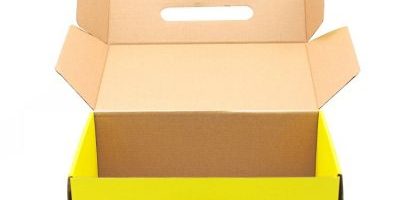Innovation in the realm of cardboard packaging is paving the way for more sustainable and efficient shipping practices. As businesses and consumers alike seek greener solutions, these cardboard advancements are poised to reshape the packaging landscape.
Eco-Friendly Coatings: Manufacturers are developing eco-friendly coatings for cardboard packaging that enhance its durability and resistance to moisture, without compromising recyclability. These coatings protect the package during shipping while maintaining its sustainability credentials.
Bio-Based Inks: Traditional printing inks can contain harmful chemicals. Bio-based inks made from renewable sources are gaining popularity for their reduced environmental impact, making them a greener choice for cardboard packaging.
Water-Based Adhesives: Adhesives used in cardboard packaging are transitioning to water-based formulas that are less harmful to the environment. These adhesives offer strong bonding properties while being easier to recycle.
Smart Packaging: Incorporating technology into cardboard packaging can enhance the consumer experience while also minimizing waste. Smart packaging solutions, such as QR codes or NFC tags, allow consumers to access product information digitally, reducing the need for excessive printed materials.
Zero-Waste Designs: Design innovations are focusing on creating packaging solutions with minimal waste. Die-cut designs that optimize material usage and eliminate excess are becoming more prevalent, contributing to a more sustainable packaging process.
Reusable Packaging: Some cardboard packaging solutions are designed for multiple uses. Reusable packaging reduces the need for frequent replacements and minimizes waste generation.
Incorporating Sustainable Materials: Cardboard packaging is being combined with other sustainable materials, such as recycled plastics or biodegradable films, to create hybrid solutions that balance durability and eco-friendliness.
Minimalist Design Philosophy: A minimalist design approach emphasizes simplicity and elegance. Packaging with fewer components and simpler designs reduces waste and resource consumption.
Packaging as a Service: Some companies are exploring packaging-as-a-service models, where packaging is designed for easy return and reuse. This approach reduces packaging waste and encourages a circular economy.
Consumer Engagement: Packaging innovations are enhancing consumer engagement with sustainability. Transparent packaging designs allow consumers to see the product without excessive packaging layers, creating a sense of authenticity and reducing waste.
As cardboard packaging continues to evolve, these innovations reflect a commitment to sustainable practices and environmental stewardship. Businesses that embrace these advancements not only contribute to a greener future but also position themselves as leaders in packaging sustainability.








